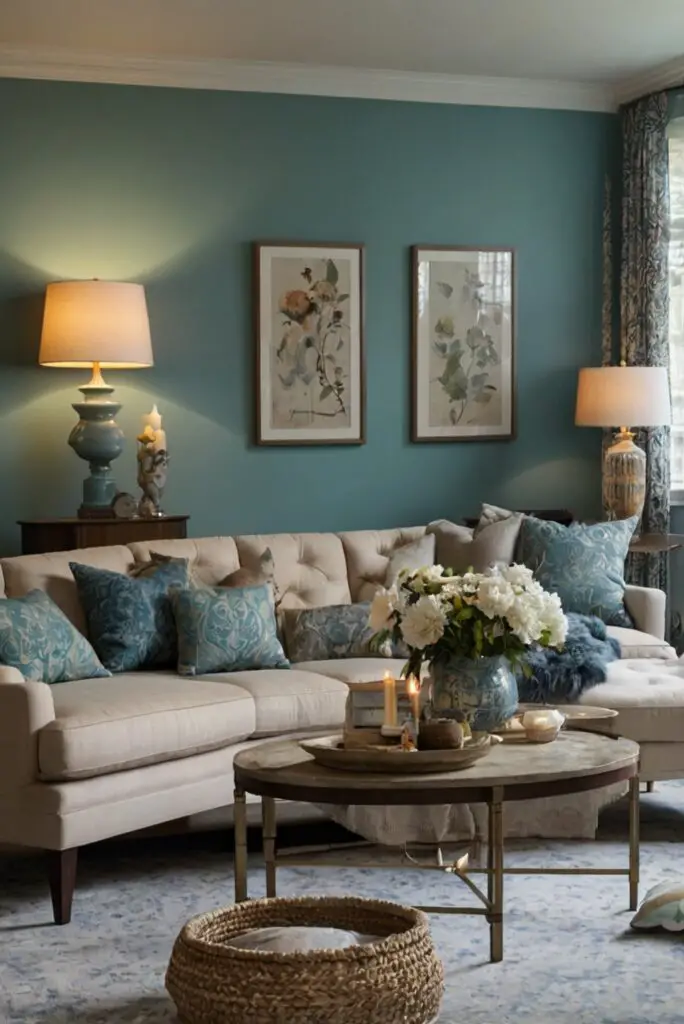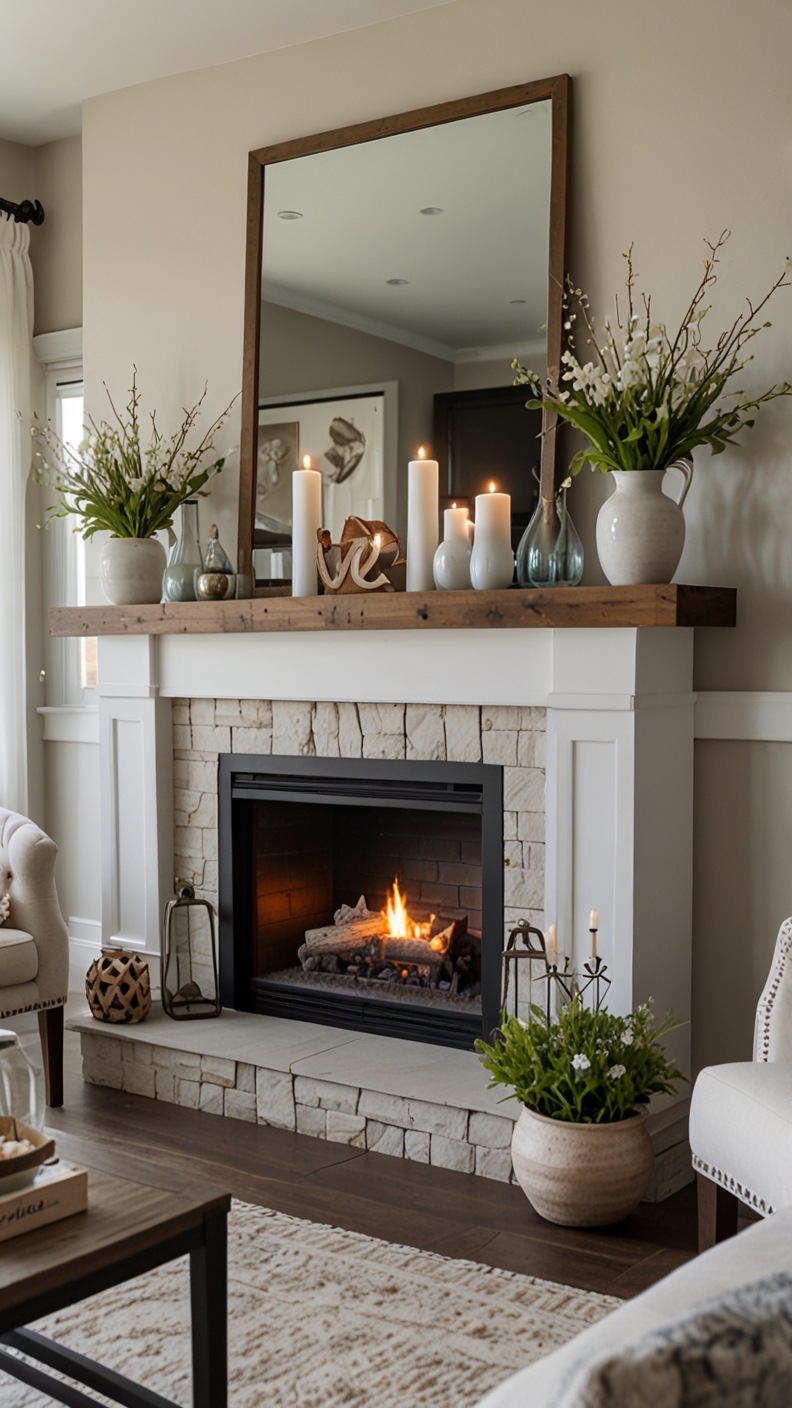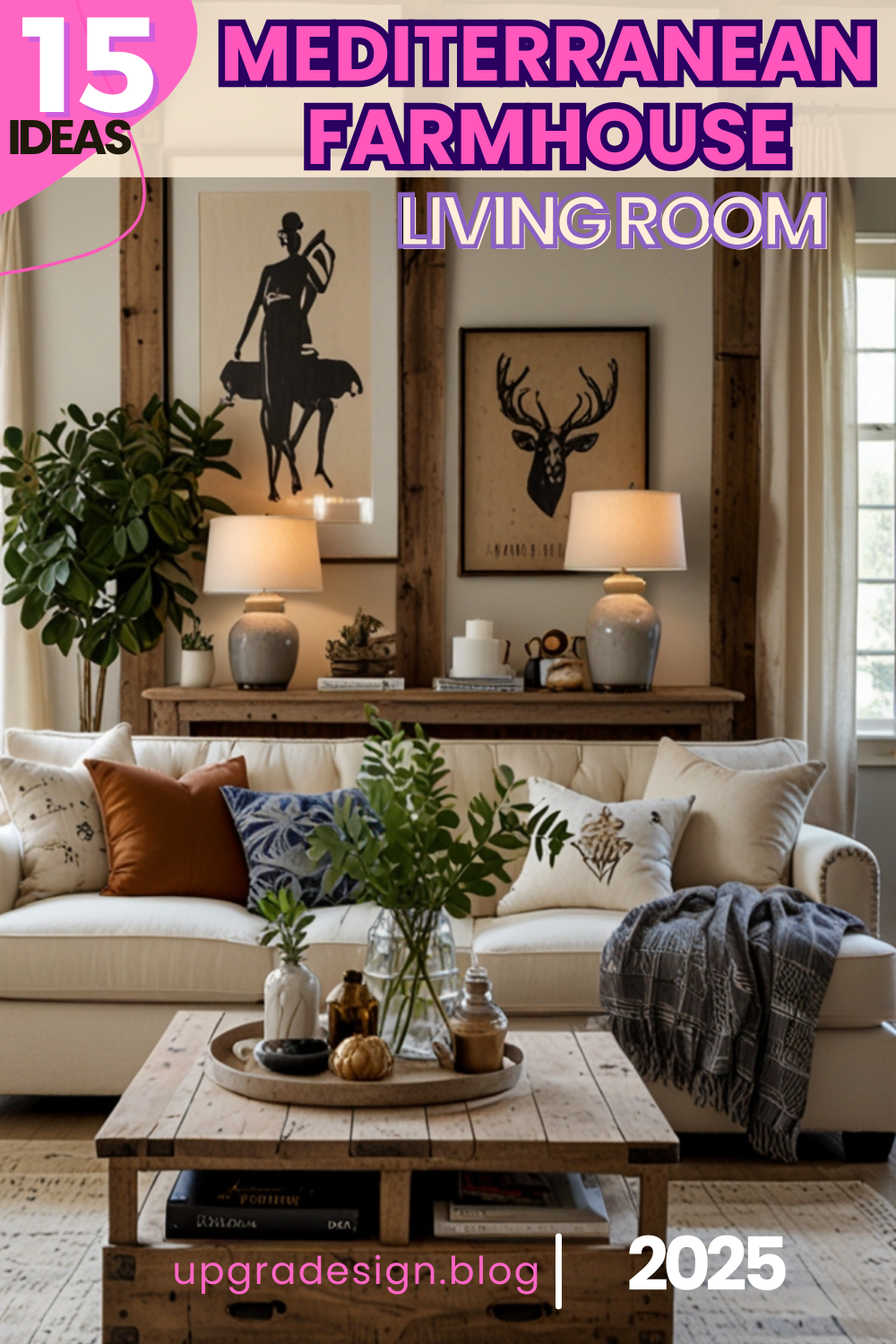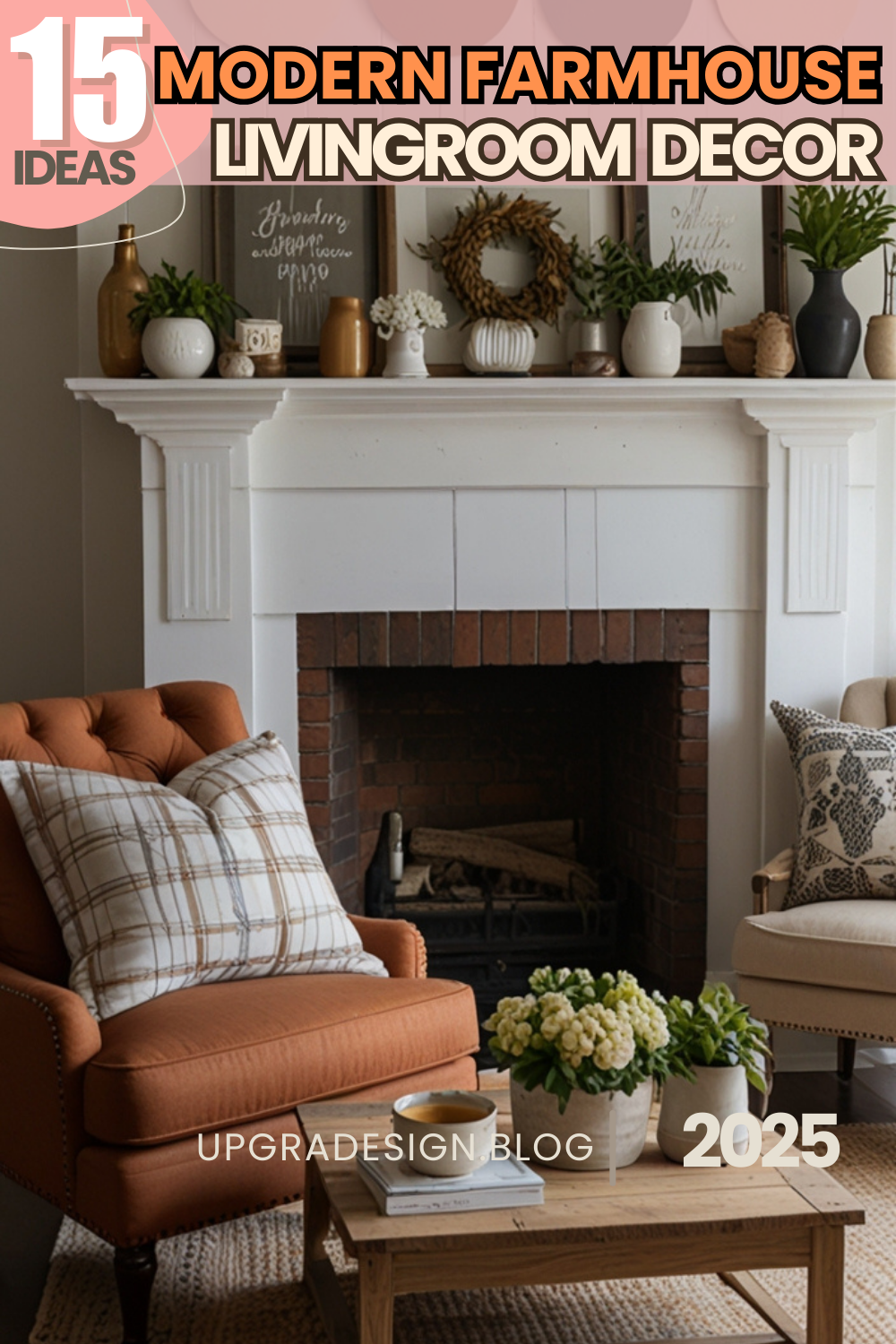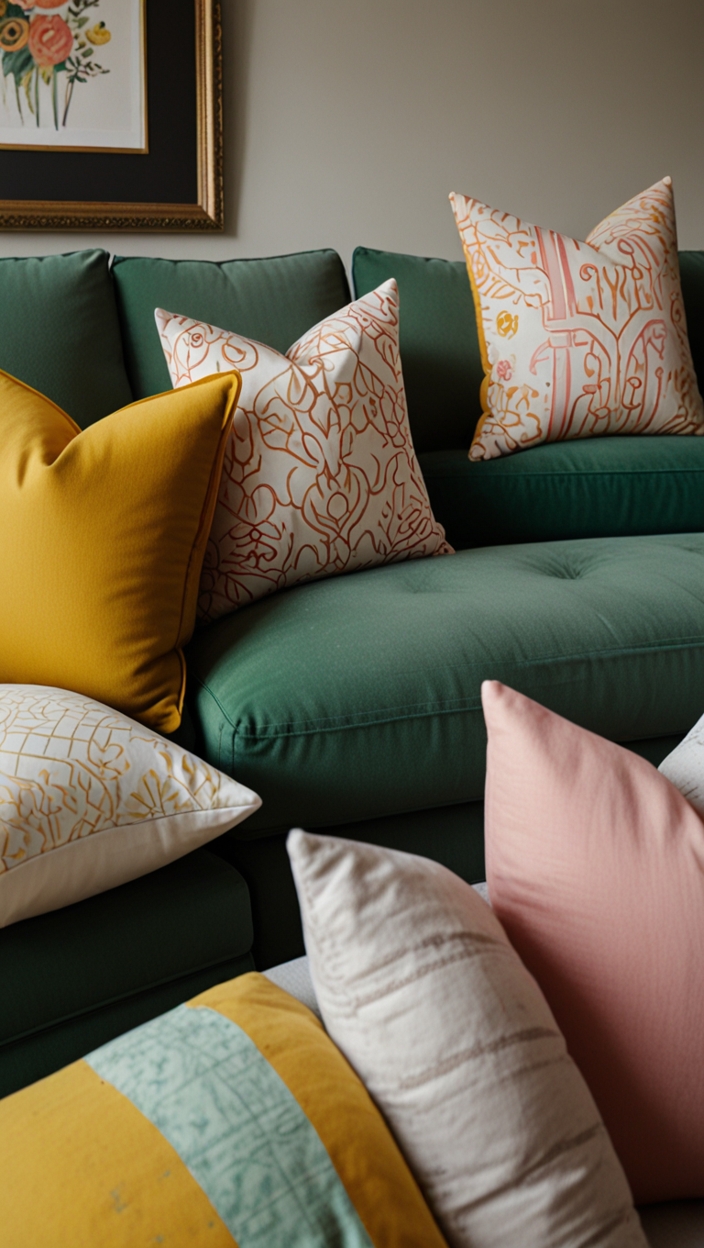Discover the power of a neutral color scheme in creating a versatile living room design. Embrace timeless elegance and endless possibilities with these daily interior designer routines.
**
How to Use a Neutral Color Scheme to Create a Versatile Living Room Design?
**
My Lovely Spring Paint for 2025
Ready for a Spring Makeover? Explore the Freshest 2025 Paint Trends!
White Sage/Green SW Pistachio green Soft blue Honeysweet/Orange Pink Sugar Sage Tint BMAs an Amazon Associate, I may earn a commission from qualifying purchases at no extra cost to you.
**
How to Use a Neutral Color Scheme to Create a Versatile Living Room Design?
**
Using a neutral color scheme in your living room design can create a versatile and stylish space. Start by choosing a neutral base color such as white, beige, or gray for the walls and larger furniture pieces. Then, add pops of color with accent pieces like throw pillows, rugs, and artwork. This allows you to easily change the look of your room by switching out the accessories. Neutral colors also have a calming effect and can make a room feel more spacious. To balance the neutrality, incorporate texture through fabrics and materials. This approach is great for home decorating and interior design, providing a timeless appeal that allows for easy updates as trends change.
How to choose the right neutral colors for a versatile living room design?
My fAV Spring DECOR for 2025
Discover Spring’s Best 2025 Decor Combinations – Perfect for Any Room!
Oversized Indoor Plants White Curved Sofas Rugs BOH Brown Cream Moroccan Hype Boho Rug Outdoor Patio Furniture Sets Topfinel Pillow CoversAs an Amazon Associate, I may earn a commission from qualifying purchases at no extra cost to you.
Neutral colors are essential for creating a versatile living room design that is timeless and adaptable to different styles. When selecting the right neutral colors for your space, consider the following key points:
– **Undertones**: Pay attention to the undertones of neutral colors to ensure they complement each other and create a harmonious palette. Warm undertones like yellow or red can add coziness, while cool undertones like blue or green can create a more serene atmosphere.
– **Natural Light**: Consider the amount of natural light in your living room when choosing neutral colors. Lighter neutrals can brighten up a room with limited natural light, while darker neutrals can add depth and warmth to a space flooded with sunlight.
– **Color Samples**: Always test neutral colors in your space before making a final decision. Paint swatches on different walls and observe how they look throughout the day under various lighting conditions.
– **Complementary Colors**: Think about the other elements in your living room, such as furniture, artwork, and accessories, and choose neutral colors that will complement these pieces. Neutral colors should enhance the overall design scheme without overpowering or clashing with existing elements.
What are the benefits of using a neutral color scheme in a living room?
Utilizing a neutral color scheme in your living room offers several advantages, including:
– **Timelessness**: Neutral colors like white, beige, gray, and taupe are classic choices that remain stylish regardless of changing trends. This ensures that your living room design will stand the test of time.
– **Versatility**: Neutral colors serve as a versatile backdrop for mixing and matching different furniture styles, patterns, and textures. They can easily transition between various design themes and color schemes.
– **Serenity and Relaxation**: Neutral colors create a calming and serene atmosphere, making them ideal for relaxation and unwinding in the living room. They can help reduce visual clutter and promote a sense of tranquility.
– **Enhanced Lighting**: Lighter neutral colors can reflect natural and artificial light, making the living room appear brighter and more spacious. This is especially beneficial for smaller or darker rooms.
– **Showcase Accents**: A neutral color scheme allows you to highlight and showcase statement pieces, artwork, or colorful accents in the living room without overwhelming the space.
How can I ensure my neutral living room doesn’t look boring or bland?
To prevent a neutral living room from appearing boring or bland, consider the following strategies:
– **Texture Play**: Incorporate a variety of textures like plush rugs, velvet cushions, woven baskets, and metallic accents to add visual interest and tactile appeal to the space.
– **Contrast**: Introduce contrast through different shades of neutrals, varying textures, and pops of color to create depth and dimension in the room.
– **Statement Pieces**: Include bold furniture pieces, unique lighting fixtures, or eye-catching accessories to serve as focal points and inject personality into the neutral palette.
– **Pattern Mixing**: Experiment with subtle patterns like stripes, geometric designs, or floral prints in neutral tones to enliven the space without overwhelming it.
– **Greenery**: Bring in indoor plants or fresh flowers to introduce a natural element and add a pop of color to the neutral backdrop, enhancing the overall ambiance of the living room.
Can I add pops of color to a neutral living room design?
Yes, incorporating pops of color is an effective way to infuse personality and vibrancy into a neutral living room design. Consider the following tips for adding color to your neutral space:
– **Accent Walls**: Paint one wall in a bold hue to create a focal point and add a touch of drama to the room without overwhelming the entire space.
– **Colorful Accessories**: Introduce colorful throw pillows, blankets, vases, artwork, or rugs in different hues to create visual interest and contrast against the neutral backdrop.
– **Statement Furniture**: Opt for a vibrant sofa, armchair, or ottoman in a standout color to make a bold statement and anchor the seating area in the living room.
– **Artwork**: Display colorful artwork or photography to inject energy and personality into the space, serving as a conversation starter and focal point in the room.
– **Natural Elements**: Use live plants, flowers, or botanical prints to incorporate shades of green and other earthy tones, bringing a refreshing and lively touch to the neutral setting.
What are the risks of using too many neutral colors in a living room?
While neutral colors offer versatility and timelessness, using too many neutrals in a living room can pose certain risks:
– **Monotony**: An over-reliance on neutrals without any variation in tones, textures, or accents can lead to a monotonous and uninspiring living room design that lacks visual interest.
– **Lack of Definition**: Without contrast or pops of color, a space filled with neutral colors may lack definition and appear flat or sterile, making it challenging to create focal points or establish a cohesive look.
– **Dull Atmosphere**: Excessive neutrality can result in a dull and uninviting atmosphere that lacks warmth, personality, and charm, potentially making the space feel cold or institutional.
– **Inadequate Personalization**: Using too many neutral colors without incorporating elements that reflect your personal style or preferences can result in a generic and impersonal living room that lacks character and individuality.
– **Limited Creativity**: Overdoing neutrals may restrict your creativity and design choices, preventing you from experimenting with different color schemes, patterns, or textures to achieve a more dynamic and visually engaging space.
How can I create a cohesive look with a neutral color scheme in my living room?
To ensure a cohesive and well-balanced look with a neutral color scheme in your living room, follow these guidelines:
– **Color Consistency**: Maintain a consistent undertone or hue throughout the space to create a unified palette that ties all elements together harmoniously.
– **Layering**: Experiment with layering different shades of neutrals, textures, and materials to add depth, dimension, and visual interest to the design without introducing additional colors.
– **Balance**: Strike a balance between light and dark neutrals to prevent the room from feeling too heavy or too airy. This equilibrium ensures a harmonious and comfortable living environment.
– **Flow**: Consider the flow of colors and materials from one area to another within the living room to establish a seamless transition and cohesive feel across the entire space.
– **Anchor Points**: Use anchor points like area rugs, accent walls, or statement furniture pieces in complementary neutral tones to ground the design and create focal points that draw the eye.
Why should I consider incorporating different textures and materials in a neutral living room design?
Integrating various textures and materials in a neutral living room design is crucial for enhancing the overall aesthetic appeal and creating a multi-dimensional space. Here’s why you should consider incorporating diverse textures and materials:
– **Visual Interest**: Mixing textures like velvet, leather, wood, metal, and glass adds visual interest and tactile richness to the room, making it more engaging and inviting.
– **Depth and Contrast**: Contrasting textures introduce depth and dimension to the design, allowing different elements to stand out and create a dynamic interplay of light and shadow.
– **Luxurious Feel**: Incorporating luxurious materials like silk, faux fur, or marble elevates the elegance and sophistication of the living room, conveying a sense of luxury and refinement.
– **Warmth and Comfort**: Soft textures such as plush rugs, knit throws, and upholstered seating bring warmth and comfort to the space, making it cozy and welcoming for relaxation and socializing.
– **Personalized Touch**: Each texture and material contributes to the overall ambiance and style of the living room, allowing you to personalize the space and showcase your unique design preferences and personality.
Key Takeaways
– **Undertones**: Choose neutral colors with complementary undertones for a cohesive palette.
– **Texture Play**: Incorporate a variety of textures to add depth and visual interest.
– **Pops of Color**: Introduce colorful accents like pillows and artwork to prevent a bland look.
– **Consistency**: Maintain color consistency and balance when using neutral tones.
– **Diverse Materials**: Mix different materials for a luxurious and personalized living room design.

